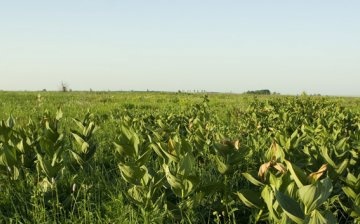Lobel's hellebore - a poisonous helper
Chemeritsa lobela - an inhabitant of flooded meadows, floodplains and wetlands, standing out among its neighbors with tall strong stems, similar to corn, grows in damp and cold fogs. You can find Chemeritsa in the wild and on abandoned lands, the plant blooms only in the thirtieth year of life, covered with white-green flowers.
Every year before winter, Chemeritsa lobela dies off completely, leaving only the rhizome for wintering. You can understand that the plant has reached maturity and can produce seeds by the number of leaves, which should be from 10 to 15.
Lobela hellebore is a toxic plant, its stems, leaves and roots are saturated with poison. It has long been known that two grams of crushed rhizomes can kill a horse. But it is precisely because of its poisonous qualities that Chemeritsa belongs to medicinal plants. Its alcoholic infusions are used for rubbing, anesthesia, for neuralgia and joint diseases, decoctions help with scabies and dermatitis.
Chemeritsa is widely used in veterinary medicine, with its help parasitic insects are removed, used as an emetic, and purulent wounds are sprinkled with lobelle powder.
Gardeners and gardeners from Chemeritsa prepare an insecticidal solution to repel garden pests.
Especially a lot of Chemeritsa grows in the Stavropol region and the Volga region, where more than thirty individuals can be caught on one square meter of flooded meadows. Only rhizomes that are dug after the tops die off are suitable for pharmacy collection. They are handled with extreme care and kept separate from other medicines.



